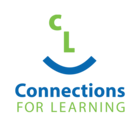Virtual Learning students have the opportunity to make meaningful connections between their life and their learning. Through flexibility in education delivery and programming, Virtual Learning allows students to explore their world outside of school while taking every opportunity to link these endeavours to their school experience.
Students may be looking to schedule their education around travel, athletic pursuits, work responsibilities or any other unique experiences that present themselves. Parents may be looking to take on a more involved role in their child’s learning journey, or connect their child with an opportunity that will enrich their lived and learned experience. Virtual Learning can be a great solution in any of these scenarios.
